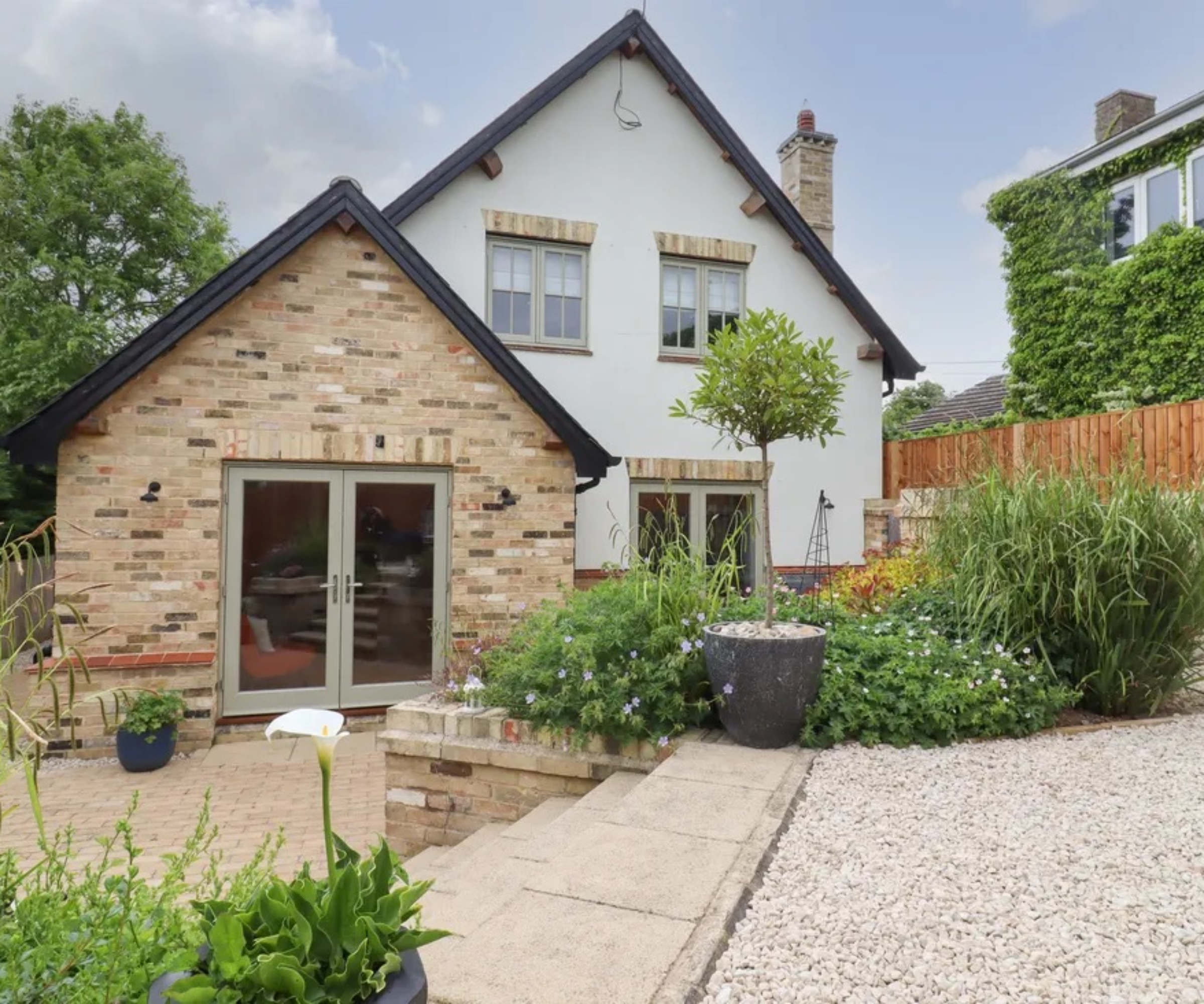When we first decided to self-build, I genuinely thought finding a plot would be easy. You know, clicking through listings online and wandering through villages, picking out “the one,” and feeling the magic of it all coming together. Well, I can now say with absolute certainty: it’s not like that. Not even close.
Our search began when we decided to move to Cambridgeshire. The plan was simple: sell our home in the Midlands and find something similar over here. What we didn’t account for was just how expensive the South East had become. We quickly realised we had three options: borrow more (which made me twitchy as a born-and-bred Yorkshireman), downsize (not ideal with three growing kids), or stretch our money further by building a home from scratch.
I’d worked in construction for years – mainly on developments for employers – so I knew the process inside out. Building didn’t put me off, in fact, it felt like the obvious solution. We just needed to find the right plot.
Setting expectations (and getting them wrong)
Hindsight is a wonderful thing, and one of the problems that we can now see is that we didn’t start with a clear picture of what we really wanted.
We vaguely knew we wanted a semi-rural spot – not isolated, but in peaceful location. A bit of land, space for a workshop and somewhere safe and friendly for the kids to roam. We weren’t looking for flashy or grand. Just something affordable, a community, and a chance to build something that suited how we actually lived.
Mistake number two – we also assumed it would take just a few weeks to find something suitable. We were wrong.
Plot hunting: a test of patience
Finding a decent building plot is hard work. There’s no instant gratification like browsing endless house listings on Rightmove. We soon discovered plots are scarce, often overpriced, or loaded with hidden issues. If they’ve been sitting unsold, it’s often a plot red flag for reasons such as being in a flood zone, tricky access, or a murky planning history.
We scoured Plotfinder, Rightmove and Zoopla. We pestered estate agents. We drove through villages looking for “land for sale” signs and chatted up locals who might know someone thinking of selling. A few times we got excited, only to discover the plot had been under offer for ages, or wasn’t even suitable for building on.
One of the most deflating moments came with a fantastic half-acre site outside a Cambridgeshire village. It was the perfect size and had countryside views to die for. But, it was too remote for my wife – she wanted community, neighbours and somewhere with a bit of life. I was gutted. We then realised that until we got on the same page, we’d be wasting time.
We also started to consider some fairly dodgy options out of desperation – plots with poor access, steep gradients and even dodgy neighbours. This taught us that if you want your version of the dream (and especially if you’re on a tight budget), you can’t rush it.
The plot we eventually found (sort of)
A few months later, we found something that on the surface, didn’t look like a plot at all. It was a tired old 1970s house listed on Rightmove. Ugly as sin, but what caught my eye was the side garden. It wasn’t huge, but big enough to comfortably accommodate a new house.
Here’s where it got interesting: the garden had been the subject of two previous planning applications. Both were refused and most buyers wouldn’t have touched it. But with a sharp eye, we saw potential.
We researched the reasons for planning permission refusal. The planning officer had stated that the proposed development would “neither preserve nor enhance the conservation area,” and would “cause harm due to its scale and mass.”
In other words, the applications had failed because the design was poor and the proposal didn’t fit the character of the area. That didn’t put us off – in fact, it gave us hope.
We spoke to a planning consultant and had a chat with the local authority. Their advice was cautious but encouraging. Essentially, if we came forward with a more sympathetic, better-designed scheme, there was no reason why planning permission couldn’t be granted. So we decided to take a calculated risk.
We didn’t make our offer subject to planning consent – which is usually the safer route – because we suspected the seller had given up the idea of the garden as a plot, and we didn’t want to alert them to its true value.
At the advertised price, by buying the house, we were essentially getting the land for free. Worst case? We’d be stuck with a very ugly 1970s house. Not ideal, but not a financial disaster either. We made our offer, played up our family credentials, and held our breath. The sellers accepted.
The buying process
From there, things got serious. Our solicitor reviewed the title documents, asked all the right questions when buying land to build on, checked for access issues, drainage rights, potential ransom strips – you name it, we checked it. We also paid for a ground investigation to check for ground issues and contamination. It wasn’t cheap, but well worth the peace of mind.
The paperwork was fine and there weren’t any legal concerns. But we hadn’t accounted for one thing: the neighbours.
When we introduced ourselves and shared what we hoped to do, the reaction was, let’s say…frosty. We were immediately warned that previous attempts to build had sparked serious local opposition. Not great news, considering we hadn’t even submitted our plans yet.
But, the plot had potential, and the house price had given us room to manoeuvre, so we took the risk and pressed on.

Understanding the refusals (and learning from them)
We went back to the drawing board – literally. The previous designs had been clumsy and completely out of step with the surrounding architecture. No wonder the neighbours had objected and no wonder they’d been refused.
We decided to take a different approach. First, we got proper architectural advice and briefed a designer to produce a high-quality, contextual scheme. Secondly, and this was probably the most important step, we listened to the neighbours.
We asked them what kind of house they’d find acceptable. Unsurprisingly, they preferred something traditional. Nothing flashy and modern, just something in keeping with the cottages already lining the street. Call it a bit “pastiche” if you like, but honestly, we didn’t care. We were more concerned about winning consent and keeping things neighbourly.
We submitted a full planning application, this time guided by a really good planning consultant. It was nerve-wracking, especially when a few negative comments trickled in. But this time, we had a solid case and the support of our neighbours. And crucially, a design that addressed every one of the previous refusal points.
Twelve weeks later, the decision arrived: approved. That moment still gives me chills. A mix of elation, disbelief, and if I’m honest, relief. We’d turned a write-off into a real opportunity, all because we understood the refusal, respected the setting, and invested in high quality design.

What we learned along the way
While the process was challenging, it was certainly informative – even for someone who works in the industry – and we learnt a number of key lessons along the way.
- Be patient – The right opportunity might not look like a plot. It might be hidden behind another property, where no one can see the potential
- Understand why planning was refused – Poor design can always be improved and often secures lot of refusals. What you can’t fix are fundamental issues like flood risk or no access
- Talk to neighbours – You might not win everyone over, but listening to concerns and adapting where you can, will go a long way
- Good architecture makes a difference – A well-designed home that fits in with the local context will always have a better chance
- Don’t be afraid of taking educated risks – If you’re getting land effectively for free, there’s room to be brave. But if you’re handing over your life’s savings, get cast iron guarantees
Standing back looking at the house we’ve built, knowing we made it happen, is one of the best feelings I’ve ever had. With hard work, persistence and the right approach, you can win big, and that for me, is what self building is all about.
I’m often asked, would I do it again? My answer? Absolutely – but more carefully.
Buying land is nothing like buying a house. It’s slower, riskier, and full of unknowns. But when it works out, it’s unbelievably rewarding.
We bought a house no one else wanted, on a plot that most people had written off. However, by understanding the planning history, talking to the neighbours, and putting real thought into the architecture, we succeeded where others had failed.
There was risk, but it was measured, and we had nothing to lose. We knew that even if planning was refused again, we still owned a house. It wasn’t our dream home, but we weren’t throwing money down the drain.

Think you may have found a similar opportunity where an older house is cited on a larger garden? Find out how much land you need to build a house, or, if your neighbour seems to have a glut of land that’s not used, follow this expert advice on how to buy garden land from a neighbour to build a house.

View the original article and our Inspiration here


Leave a Reply